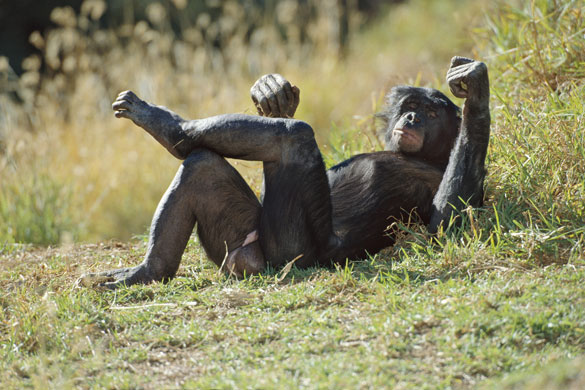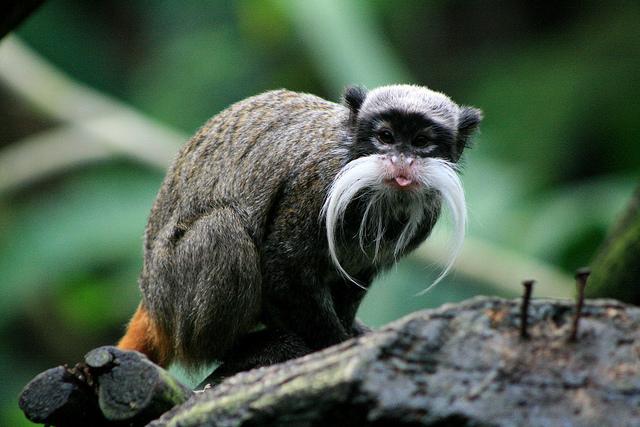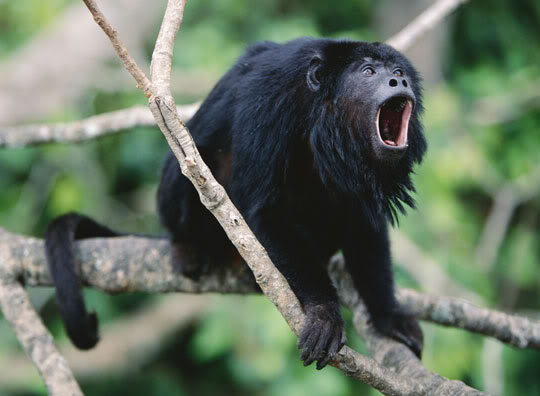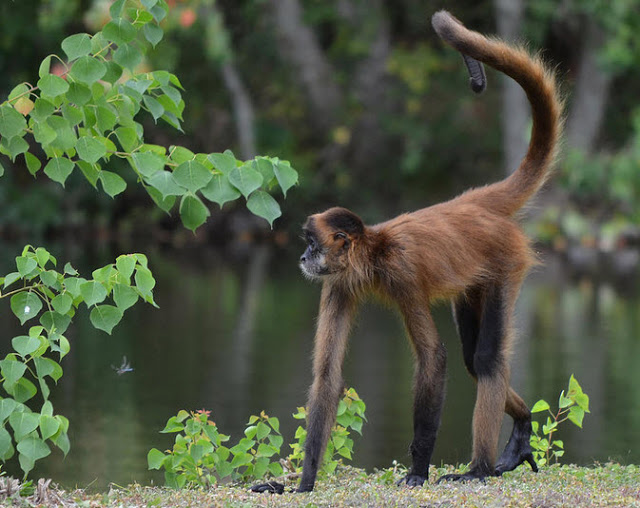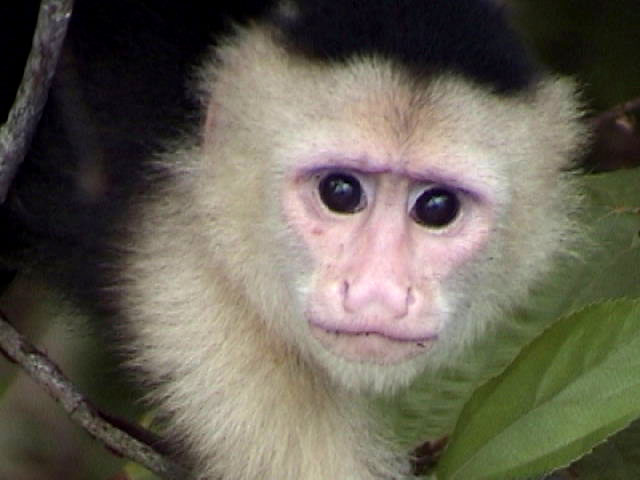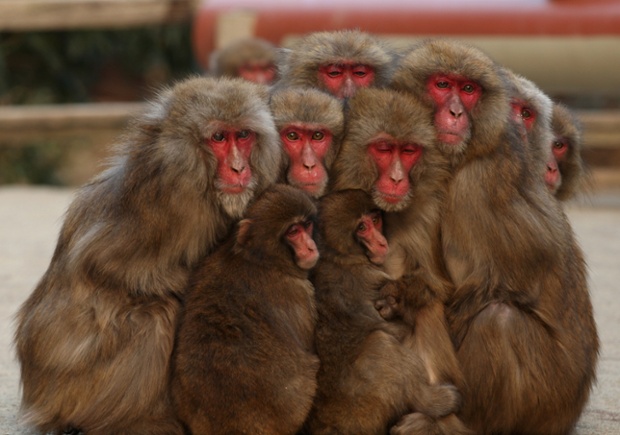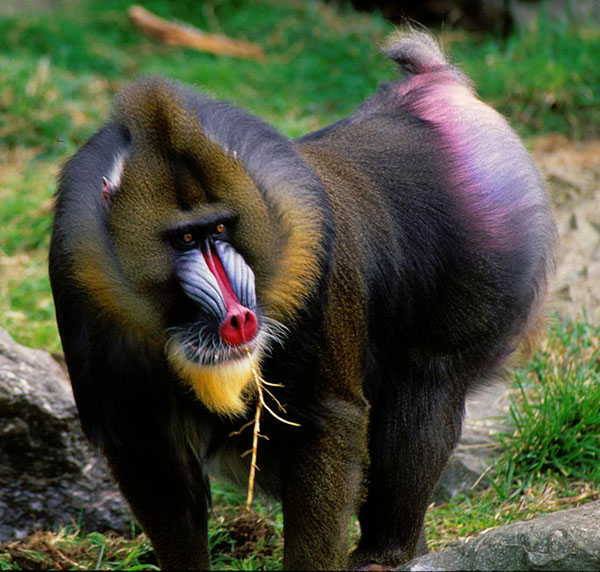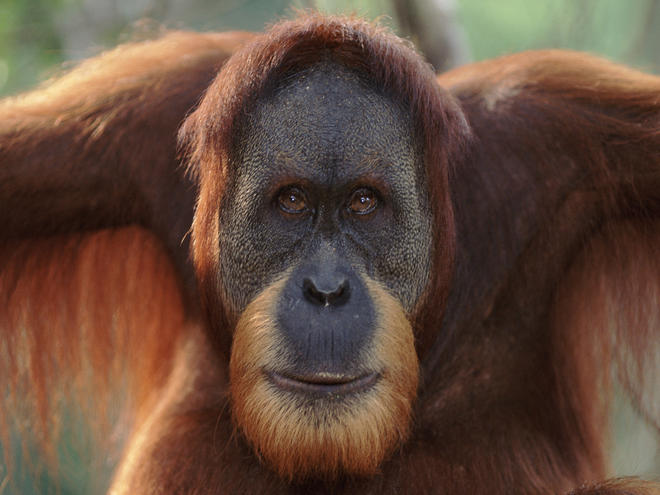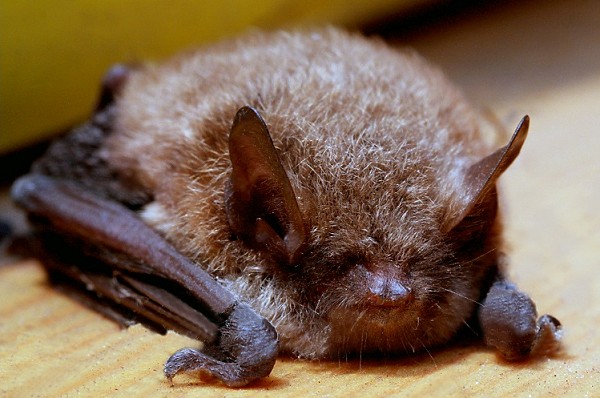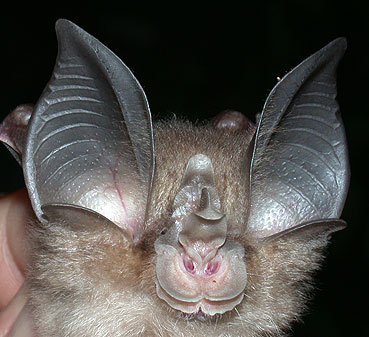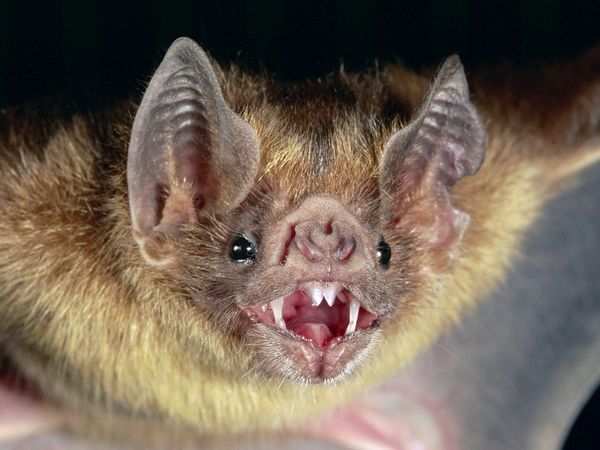Difference between revisions of "Physical World/Mammals - 2"
(Created page with "{| class="wikitable" | |'''Bonobo''' ''Pan paniscus'' Also known as pygmy chimpanzee. Bonobos are the only non-human animal to have been observed engaging in face-to-face...") |
(Added images) |
||
| Line 1: | Line 1: | ||
{| class="wikitable" | {| class="wikitable" | ||
| − | | | + | |[[File:Bonobo.jpg|none|thumb]] |
|'''Bonobo''' | |'''Bonobo''' | ||
| Line 8: | Line 8: | ||
Also known as pygmy chimpanzee. Bonobos are the only non-human animal to have been observed engaging in face-to-face sex and oral sex | Also known as pygmy chimpanzee. Bonobos are the only non-human animal to have been observed engaging in face-to-face sex and oral sex | ||
| − | |||
Found in the forests of the Democratic Republic of the Congo | Found in the forests of the Democratic Republic of the Congo | ||
|- | |- | ||
| − | | | + | |[[File:Emperor tamarin.jpg|none|thumb]] |
|'''Emperor tamarin''' | |'''Emperor tamarin''' | ||
| Line 19: | Line 18: | ||
A species of tamarin allegedly named for its resemblance to the German emperor Wilhelm II | A species of tamarin allegedly named for its resemblance to the German emperor Wilhelm II | ||
| − | |||
Emperor tamarins typically have twins | Emperor tamarins typically have twins | ||
|- | |- | ||
| − | | | + | |[[File:Howler monkey.jpg|none|thumb]] |
|'''Howler monkey''' | |'''Howler monkey''' | ||
| Line 31: | Line 29: | ||
Among the largest of the New World monkeys and one of only a few nest-building monkeys | Among the largest of the New World monkeys and one of only a few nest-building monkeys | ||
| − | |||
Famous for their loud howls, which can travel three miles through dense forest, and are caused by an enlarged hyoid bone | Famous for their loud howls, which can travel three miles through dense forest, and are caused by an enlarged hyoid bone | ||
|- | |- | ||
| − | | | + | |[[File:Spider monkey.jpg|none|thumb]] |
|'''Spider monkey''' | |'''Spider monkey''' | ||
| Line 44: | Line 41: | ||
Disproportionately long limbs and long prehensile tails make them one of the largest New World monkeys and gives rise to their common name. The hands are long, narrow and hook-like, and have an absence of thumbs | Disproportionately long limbs and long prehensile tails make them one of the largest New World monkeys and gives rise to their common name. The hands are long, narrow and hook-like, and have an absence of thumbs | ||
|- | |- | ||
| − | | | + | |[[File:Capuchin monkey.jpg|none|thumb]] |
|'''Capuchin monkey''' | |'''Capuchin monkey''' | ||
| Line 60: | Line 57: | ||
A reddish-brown arboreal Old World monkey that is endemic to Borneo | A reddish-brown arboreal Old World monkey that is endemic to Borneo | ||
| − | |||
The large nose or proboscis of the male can exceed 10 cm in length, and hangs lower than the mouth | The large nose or proboscis of the male can exceed 10 cm in length, and hangs lower than the mouth | ||
|- | |- | ||
| − | | | + | |[[File:Japanese macaque.jpg|none|thumb]] |
|'''Japanese macaque''' | |'''Japanese macaque''' | ||
| Line 72: | Line 68: | ||
Sometimes known as the snow monkey because they live in areas where snow covers the ground for months each year – no other monkey is more northern-living, nor lives in a colder climate | Sometimes known as the snow monkey because they live in areas where snow covers the ground for months each year – no other monkey is more northern-living, nor lives in a colder climate | ||
|- | |- | ||
| − | | | + | |[[File:Mandrill.jpg|none|thumb]] |
|'''Mandrill''' | |'''Mandrill''' | ||
| Line 82: | Line 78: | ||
Mandrills are the world's largest monkeys | Mandrills are the world's largest monkeys | ||
|- | |- | ||
| − | | | + | |[[File:Gibbon.jpg|none|thumb]] |
|'''Gibbon''' | |'''Gibbon''' | ||
| − | family Hylobatidae | + | family Hylobatidae |
Also called the lesser apes | Also called the lesser apes | ||
| − | |||
Gibbons are highly arboreal and bipedal on the ground. They are masters of their primary mode of locomotion, brachiation, swinging from branch to branch | Gibbons are highly arboreal and bipedal on the ground. They are masters of their primary mode of locomotion, brachiation, swinging from branch to branch | ||
|- | |- | ||
| − | | | + | |[[File:Orangutan.jpg|none|thumb]] |
|'''Orangutan''' | |'''Orangutan''' | ||
| Line 101: | Line 96: | ||
The Bornean orangutan (''P. pygmaeus'') and the Sumatran orangutan (''P. abelii'') are the two exclusively Asian species of extant great apes | The Bornean orangutan (''P. pygmaeus'') and the Sumatran orangutan (''P. abelii'') are the two exclusively Asian species of extant great apes | ||
| − | |||
The word orangutan comes from the Malay language and means 'person of the forest' | The word orangutan comes from the Malay language and means 'person of the forest' | ||
|- | |- | ||
| − | | | + | |[[File:Common pipistrelle.jpg|none|thumb]] |
|'''Common pipistrelle''' | |'''Common pipistrelle''' | ||
''Pipistrellus pipistrellus'' | ''Pipistrellus pipistrellus'' | ||
| + | |||
The name of the genus is derived from the Italian word ''pipistrello'', meaning "bat" | The name of the genus is derived from the Italian word ''pipistrello'', meaning "bat" | ||
| − | |||
In 1999, the common pipistrelle was split into two species on the basis of different-frequency echolocation calls. The common pipistrelle uses a call of 45 kHz, while the soprano pipistrelle echolocates at 55 kHz | In 1999, the common pipistrelle was split into two species on the basis of different-frequency echolocation calls. The common pipistrelle uses a call of 45 kHz, while the soprano pipistrelle echolocates at 55 kHz | ||
|- | |- | ||
| − | | | + | |[[File:Horseshoe bat.jpg|none|thumb]] |
|'''Horseshoe bat''' | |'''Horseshoe bat''' | ||
genus ''Rhinolophus'' | genus ''Rhinolophus'' | ||
| + | |||
All horseshoe bats have leaf-like, horseshoe-shaped protuberances on their noses | All horseshoe bats have leaf-like, horseshoe-shaped protuberances on their noses | ||
| − | |||
They have the most sophisticated echolocation of all bats | They have the most sophisticated echolocation of all bats | ||
|- | |- | ||
| − | | | + | |[[File:Common vampire bat.jpg|none|thumb]] |
|'''Common vampire bat''' | |'''Common vampire bat''' | ||
Revision as of 11:33, 4 July 2021
| Bonobo
Found in the forests of the Democratic Republic of the Congo | |
| Emperor tamarin
A species of tamarin allegedly named for its resemblance to the German emperor Wilhelm II Emperor tamarins typically have twins | |
| Howler monkey
Famous for their loud howls, which can travel three miles through dense forest, and are caused by an enlarged hyoid bone | |
| Spider monkey
| |
| Capuchin monkey
Capuchin derives from a group of friars named the Order of Friars Minor Capuchin, an offshoot from the Franciscans, who wear brown robes with large hoods covering their heads. When explorers reached the Americas in the 15th century they found monkeys who resembled these friars and named them capuchins | |
| Proboscis monkey
The large nose or proboscis of the male can exceed 10 cm in length, and hangs lower than the mouth | |
| Japanese macaque
Sometimes known as the snow monkey because they live in areas where snow covers the ground for months each year – no other monkey is more northern-living, nor lives in a colder climate | |
| Mandrill
Its hairless face has an elongated muzzle with distinctive characteristics such as a red stripe down the middle and protruding blue ridges on the sides. The areas around the genitals and the anus are multi-coloured Mandrills are the world's largest monkeys | |
| Gibbon
Also called the lesser apes Gibbons are highly arboreal and bipedal on the ground. They are masters of their primary mode of locomotion, brachiation, swinging from branch to branch | |
| Orangutan
The word orangutan comes from the Malay language and means 'person of the forest' | |
| Common pipistrelle
In 1999, the common pipistrelle was split into two species on the basis of different-frequency echolocation calls. The common pipistrelle uses a call of 45 kHz, while the soprano pipistrelle echolocates at 55 kHz | |
| Horseshoe bat
They have the most sophisticated echolocation of all bats | |
| Common vampire bat
Vampire bats are the only known parasitic mammals. The common vampire bat mainly feeds on the blood of livestock. It uses its razor-sharp teeth to cut open the skin of its hosts and laps up their blood with its long tongue | |
| Desman
| |
| Pangolin
| |
| Coyote
Also known as the American jackal or the prairie wolf. Closest relative is the grey wolf
| |
| Dingo
Also known as the warrigal
| |
| Dhole
Also known as the Asiatic wild dog, Indian wild dog, or red wolf
| |
| Samoyed
Takes its name from the Samoyedic peoples of Siberia. These nomadic reindeer herders bred the fluffy white dogs to help with the herding, and to pull sleds when they moved | |
| Basenji
A breed of hunting dog
| |
| Saluki
| |
| Akita
Named for Akita Prefecture, where it is thought to have originated | |
| Tosa
| |
| Shar Pei
| |
| Chow Chow
| |
| Spectacled bear
Also known as the Andean bear
| |
| Sun bear
Malayan sun bear is also known as the "honey bear", which refers to its voracious appetite for honeycombs and honey. However, "honey bear" can also refer to a kinkajou
| |
| Giant panda
Name means "black and white cat-foot"
| |
| Red panda
Also known as lesser panda or red bear-cat
| |
| Kinkajou
Also known as the sugar bear, honey bear, or cat-monkey
| |
| Olinguito
Name is Spanish for "little olingo"
The species was described as new in 2013 | |
| Ratel
Also known as the honey badger
| |
| Wolverine
Also known as the glutton
It has a reputation for ferocity and strength out of proportion to its size, with the ability to kill prey many times larger than itself | |
| Clouded leopard
Found in the Himalayan foothills
| |
| Snow leopard
| |
| Jaguarundi
A small wild cat native to Central and South America
| |
| Asian palm civet
| |
| Common genet
|
